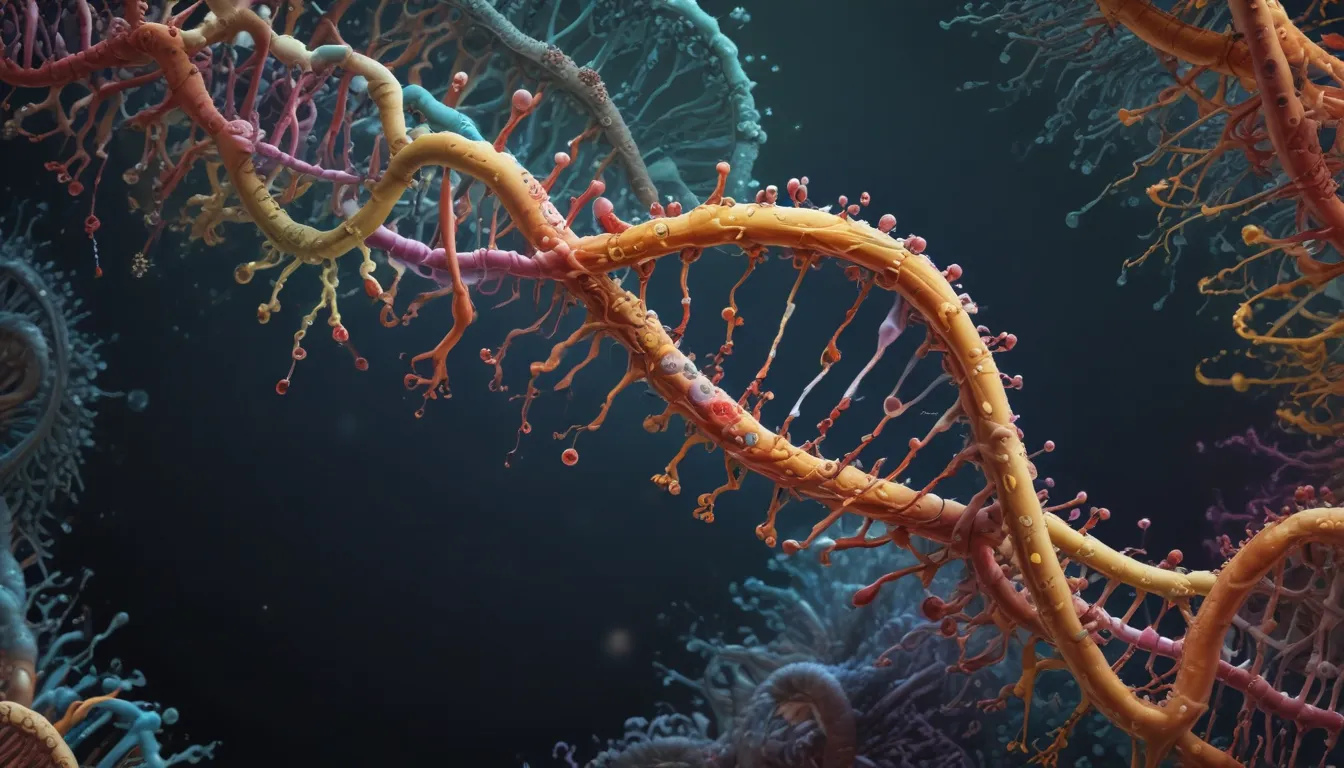A Note About Images: The images used in our articles are for illustration purposes only and may not exactly match the content. They are meant to engage readers, but the text should be relied upon for accurate information.
In the intricate world of molecular biology, mRNA splicing stands out as a crucial process that shapes gene expression and protein diversity. Through the removal of non-coding regions and the joining of coding regions, mRNA splicing creates a diverse array of messenger RNA molecules, each with the potential to generate unique protein products. While the complexities of mRNA splicing may seem daunting, understanding its fundamental role is essential in unraveling the mysteries of life itself.
Delving into the Intricacies of mRNA Splicing
Molecular biologists have long been captivated by the intricate mechanisms involved in mRNA splicing. This essential process entails the removal of introns and the joining of exons to form mature mRNA molecules. Alternative splicing, in particular, allows a single gene to produce multiple protein isoforms, enriching the proteome with a wide range of functional proteins that drive diverse biological processes.
Unlocking the Mysteries of Spliceosome
At the heart of mRNA splicing lies the spliceosome, a molecular machinery composed of RNA and proteins. This intricate complex orchestrates the precise removal of introns and the seamless joining of exons to generate functional mRNA transcripts. With the collaboration of small nuclear ribonucleoproteins (snRNPs) and accessory proteins, the spliceosome ensures the fidelity of splicing reactions, highlighting its vital role in gene expression.
The Impact of Alternative Splicing
Alternative splicing is a remarkable phenomenon that underlines the versatility of mRNA splicing. By selectively including or excluding specific exons, cells can produce distinct protein isoforms tailored to their unique needs. This tissue-specific regulation adds another layer of complexity to gene expression, contributing to the diverse array of proteins that drive cellular functions.
Implications for Disease and Therapeutics
Aberrant splicing events, such as intron retention, have been linked to a variety of human diseases, including cancer, neurodegenerative disorders, and genetic syndromes. By unraveling the underlying mechanisms of mRNA splicing, researchers can gain valuable insights into disease development and potential therapeutic targets. RNA-binding proteins play a crucial role in modulating splicing, enabling cells to fine-tune gene expression and respond to internal and external cues.
The Dynamic Nature of mRNA Splicing
Recent studies have revealed that mRNA splicing is not a fixed process but rather dynamic and subject to modulation in response to cellular cues. Environmental factors, stress, and hormonal signaling can influence splicing patterns, impacting protein diversity and cellular functions. Moreover, splicing errors are detected and corrected through quality control mechanisms, ensuring the fidelity and integrity of gene expression.
Uncovering the Potential of mRNA Splicing in Personalized Medicine
The study of mRNA splicing variations across individuals holds significant promise for personalized medicine. By dissecting splicing patterns, researchers can uncover valuable insights into disease susceptibility, drug responses, and potential therapeutic targets. This personalized approach to medicine offers a glimpse into a future where treatments are tailored to the individual, revolutionizing healthcare practices and improving patient outcomes.
Continuing Discoveries in mRNA Splicing Research
As scientists continue to unravel the intricacies of mRNA splicing, new discoveries emerge that shed light on its profound impact on cellular processes and human health. Advances in genomic technologies and computational tools have revolutionized our understanding of this complex phenomenon, paving the way for innovative research and therapeutic advancements. The study of mRNA splicing remains an active and dynamic field, offering exciting opportunities for exploring its role in gene regulation and cellular function.
Conclusion: Unveiling the Marvels of mRNA Splicing
In conclusion, mRNA splicing stands as a fascinating process that plays a pivotal role in gene expression and protein diversity. From alternative splicing and tissue-specific regulation to disease implications and personalized medicine, the realm of mRNA splicing continues to captivate researchers worldwide. By delving into the intricacies of this essential biological process, we uncover a world of endless possibilities and unparalleled insights into the mysteries of life itself.
FAQs: Exploring the Fundamentals of mRNA Splicing
- What is mRNA splicing?
-
mRNA splicing is a process that involves removing introns and joining exons to form mature mRNA transcripts, essential for protein synthesis.
-
Why is mRNA splicing important?
-
mRNA splicing increases protein diversity by allowing a single gene to produce multiple protein isoforms, each with unique functions crucial for cellular processes.
-
How does alternative splicing work?
-
Alternative splicing involves selectively including or excluding exons from pre-mRNA transcripts, enabling cells to produce a variety of protein isoforms tailored to their needs.
-
What are the consequences of aberrant splicing?
-
Aberrant splicing can lead to diseases such as cancer, neurodegenerative disorders, and genetic syndromes, highlighting the significance of understanding splicing mechanisms.
-
How is mRNA splicing regulated?
- mRNA splicing is regulated by a complex interplay of cis-regulatory elements and trans-acting factors that dictate which exons are included or excluded during the splicing process.
Embarking on a Journey of Discovery
If you’re enraptured by the world of mRNA splicing, continue your exploration of alternative splicing, RNA processing, and gene expression. Each facet offers a unique perspective on the intricate dance of molecular biology, revealing the ways in which cells orchestrate their genetic messages to create a tapestry of diverse proteins. Dive deeper into these essential biological processes to uncover the secrets that shape life itself.






